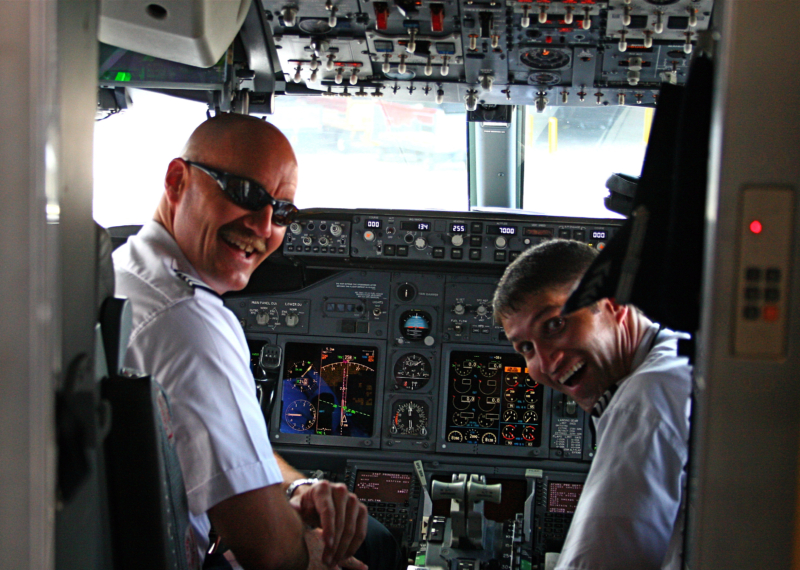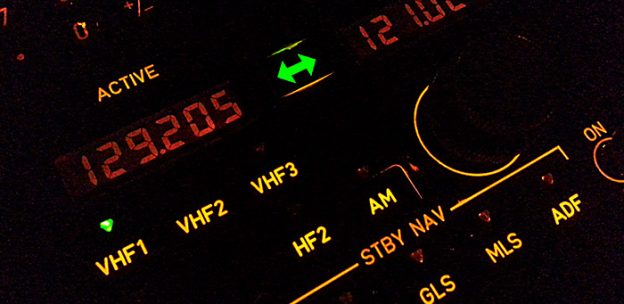Flying is one of the safest forms of transport; emergencies are rare. But if and when situations do occur, pilots and air traffic controllers have the skills and training to handle them and train continuously to ensure we are always up to date to deal with any potential events.
As a professional pilot, our priority is the safety of our customers and our aircraft. Air traffic control are one of the essential parts of achieving this and I was able to experience a training session to understand how those voices on the other end of my aircraft radio telephony are also trained to deal with emergencies.
I recently attended one of NATS’ TRUCE sessions – which stands for Training for Unusual Circumstances and Emergencies. The course includes discussion and practical simulations to cover various scenarios that could happen in the air or on the ground – anything from severe weather to aircraft or passenger-related issues.
One of the topics during the theoretical part of the TRUCE session was the scenario of a pilot suffering from hypoxia (where the body is deprived of adequate levels of oxygen). We listened to a very interesting radio playback of a pilot clearly becoming more and more disorientated up until the point where the second pilot recognised what was happening and fortunately put on his oxygen mask.

Pilot Tim Chambers (back) acting as an Aircraft Control Position Operator, playing the role as a pilot in the training
In this situation ATCOs could be the last safety net in saving the pilots and those on board the aircraft, since it is very difficult to recognise hypoxia in oneself. ATC can detect the tell-tale signs from how the pilots are communicating and how they do, or don’t, respond to instructions.
At the simulator it was interesting to see all the people that support it to create a convincing scenario. I sat with one of the Aircraft Control Positions Operators (ACPO), who act as pilots for training. I was able to inject some additional realism to the different scenarios by explaining the different actions that pilots would be performing and the rationale behind our likely decisions.
After each session, all the air traffic controllers (ATCOs), ACPOs, instructors and myself would then discuss our respective actions. What is simply not apparent to flight crew, dealing with any level of emergency in the aircraft, is the ripple effect of our actions to the wider airspace area and neighbouring sectors. It was so impressive to see the coordination that took place to ensure separation was maintained, while managing the requirements of the aircraft.
For a cabin fire emergency scenario I was told to deliberately make a few mistakes to test the ATCOs’ vigilance.
A cabin fire is one of the most serious emergencies we can face on board the aircraft and requires often complex drills in challenging conditions. Pilots will have to manage the emergency, initiate an immediate diversion and safely fly the aircraft, probably wearing their oxygen masks and with the various automated flight management systems switched off.

During the emergency I explained to the ACPO that pilots would prioritise according to an acronym FNC – Fly, Navigate, and Communicate. We simulated potential problems by ignoring some of the ATCO’s radio calls, drifting away from our cleared level and headings, and we even “accidentally” jammed the radio frequency by forgetting to release our transmit button.
Needless to say the diversion was completed successfully. It was clear in the feedback that the ATCOs had had to work extremely hard to manage all the traffic while our aircraft repeatedly changed direction in order to divert safely.
Learning how air traffic controllers work and what they could be dealing with at the same time as our aircraft, is fascinating and something I’ll be even more aware of when flying. Seeing in action all the coordinated teamwork between the ATCOs controlling the different sectors was the most beneficial part for me.
The TRUCE and STAC sessions (Scenario Training for Aircrew and Controllers, an alternative classroom-based forum for pilots and controllers) are immensely useful for both the pilots and ATCOs. They allow both parties to understand how our actions affect each other, which may not be immediately apparent in our day-to-day jobs. For example pilots may not appreciate the significant increase in ATCO workload that weather avoidance will cause, while ATCOs may not realise some of the potential effects of flying through the adverse weather, such as flight instrument malfunction due to icing.
Fortunately real incidents are rare, but we always have to be prepared. If you’re a professional pilot who’d like to attend a TRUCE or STAC course at NATS email at [email protected].
Comments
Please respect our commenting policy and guidelines when posting on this website.




19.01.2016
16:01
keithpeers247
you all do great work.